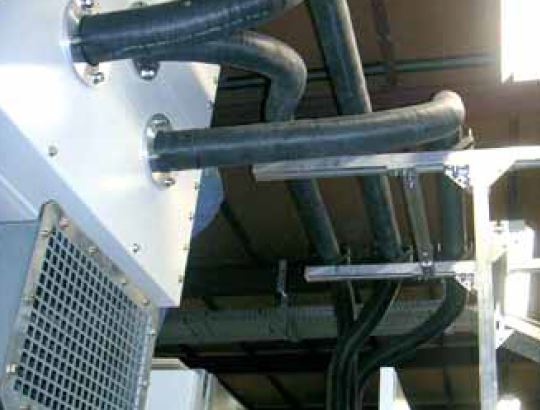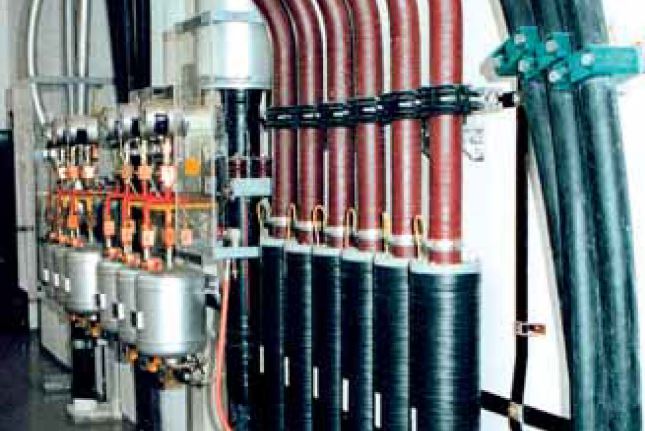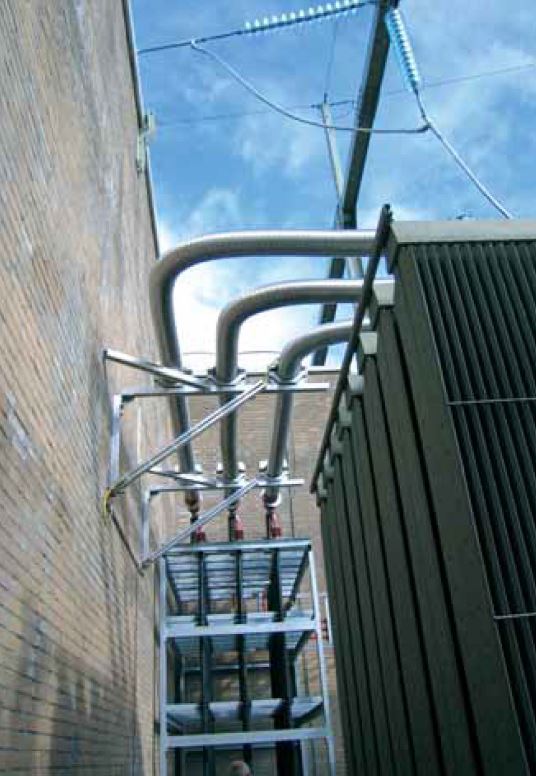Ritz Solid Insulation System Busbar
/General
The RITZ SIS Solid Insulated Bus Bar System especially offers for transmission of higher currents and/or limited space requirements a cost-effective and safe alternative to parallel-connected cable systems, metal-enclosed bus bar or bus duct systems. The equipment produced plays an important part in power generation and power distribution. Therefore, highest demands are made with respect to industrial safety. By constantly supervising the manufacturing process as well as ongoing modifications to the materials used, the highest degree of safety is guaranteed. The available test equipment allows all of the type and routine tests necessary. Before delivery each bus bar segment and connecting sleeve gets routine testing. All requirements with respect to the protection of personnel and equipment are met.
Design
The bus bar insulation is built up with Resin Impregnated Paper (RIP). Crepe paper is wound around the conductor (copper or aluminium) and impregnated under vacuum with epoxy resin. This results in cavity free insulation which is free of partial discharge. To avoid partial discharge by delamination of the insulation from the conductor a conducting layer is wrapped around the conductor. Layers of insulating crepe paper are built up on the high voltage layer according to the rated voltage. In these insulation layers of semi conducting paper, the capacitive grading at the ends of the bus bars are included. These are dimensioned to achieve an optimal distribution of the electrical field on the surface of the bus bar. These are dimensioned to reach an optimised electric field distribution on the surface of the bus bar. Thus a minimised grading length can be reached. Along the whole length of the bus bar, except the grading area, an earth layer is wound on the insulating layers. This earth layer is built up by semi conducting paper, aluminium foil layers and axial copper strips to reach a high short circuit current capability. A connection device is soldered on the copper strips used as earthing point of the bus bar. An additional three millimetres crepe insulation is applied over the earth layer as protection. The whole bus bar is sealed vacuum tight with shrinking sleeve. After drying the insulation, the paper is impregnated with a low viscosity epoxy resin under vacuum conditions. The RITZ manufacturing technology permits to build a bus bar with any geometrical shape.
Quality
Before use in production, the material is subjected to the following tests:
Conductor material:
Measurement of specific resistance
lnsulating paper:
Verification of purity
Tearing strength tes t
Impregnating resin:
Measurement of viscosity
Measurement of viscosity increase
(with temperature as parameter)
Measurement of gelation time
The impregnating process is checked by the following
measurements:
Conditioning (degassing) of the resin compound
Temperature in vacuum kiln
Continuous evacuation controls
Gelation temperature and time
Post-curing temperature and time
In the development stages, general investigations were
made and the following was determined:
Temperature of deflection under load (Martens method)
Flexural strength
Deflection
Impact strength
Module of elasticity
Co-efficiency of thermal expansion
Thermal conductivity
Customization
Aside from standard production and applications custom dimensions, connections and designs are available!
For more information on the Ritz SIS busbar click the learn more button, for pricing, delivery times or product demo, please contact us!









